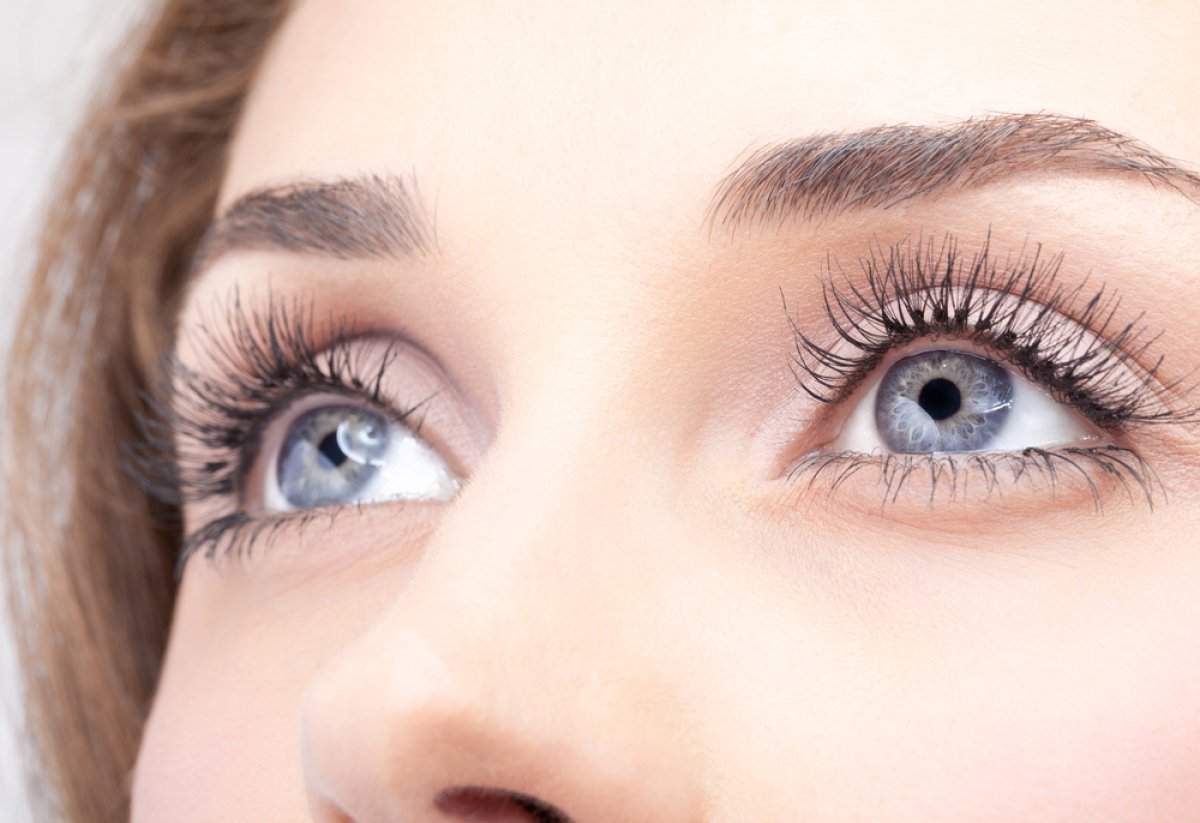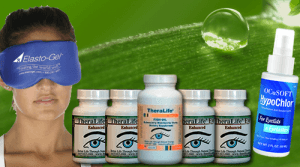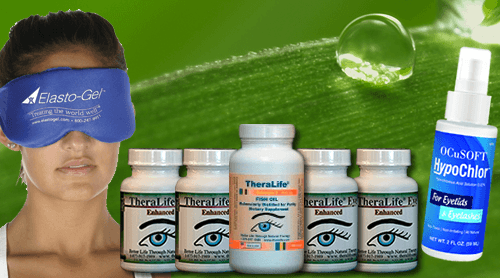Blepharitis in seniors often arises due to age-related changes, such as Meibomian gland dysfunction, which causes unstable tear films and eyelid inflammation. Symptoms typically include eyelid redness, burning sensations, and irritation. Theralife’s products offer a range of benefits for managing these conditions effectively.
Theralife’s natural supplements and treatment options are designed to address the root causes of it, providing comprehensive relief and support. Their products enhance tear production and improve eyelid health, reducing inflammation and discomfort. By using Theralife’s gentle cleansing methods, such as warm compresses and specialized eyelid cleansers, symptoms can be significantly alleviated. Additionally, Theralife offers professional treatment solutions, including antibiotics and thermal pulsation therapy, to target underlying issues effectively.
Understanding and implementing these strategies with Theralife’s products can enhance your care approach for blepharitis in seniors, optimizing management and improving quality of life. For more detailed insights and the complete range of Theralife’s offerings, visit their website.
Best Blepharitis Treatment From TheraLife
Key Takeaways
- Age-related changes in eyelid anatomy and gland function contribute to blepharitis in seniors.
- Meibomian gland dysfunction leads to unstable tear film and subsequent eyelid inflammation.
- Gentle cleansing and warm compresses are crucial for managing blepharitis in seniors.
- Regular ophthalmologist consultations provide targeted treatments and personalized care plans.
- Avoiding eye makeup during flare-ups supports healing and maintains eyelid hygiene.
Understanding Blepharitis and Its Symptoms
Blepharitis, a common ocular condition, involves inflammation of the eyelid margins, often affecting seniors due to age-related changes in eyelid anatomy and gland function.
Recognizing this disorder through symptom identification is essential for effective management. You may notice symptoms such as eyelid redness, irritation, crusting, and frequent blinking. Additionally, a sensation of burning or foreign body presence in the eyes is common.
Patient education is important, as understanding these symptoms helps in timely diagnosis and intervention. Informing patients about the importance of regular eyelid hygiene and possible use of warm compresses can alleviate discomfort. Chronic blepharitis, often difficult to treat due to persistent inflammation, requires a multifaceted approach for effective management. Clinical evaluation confirms diagnosis, guiding appropriate treatment. By staying informed, you actively participate in managing blepharitis, minimizing its impact on your quality of life.
Age-Related Factors Contributing to Blepharitis
As individuals age, changes in eyelid anatomy and gland function greatly contribute to the development of blepharitis.
Meibomian gland dysfunction, a common age-related change, leads to altered lipid secretion, resulting in an unstable tear film and subsequent eyelid inflammation. The natural thinning of the eyelid margin and reduced blink rate further exacerbate this condition, impeding effective tear distribution.
Additionally, the skin’s diminished elasticity and regenerative capacity can complicate blepharitis management. Incorporating effective skincare routines tailored to these age-related changes is essential.
Gentle cleansing with non-irritating products helps maintain eyelid hygiene, while warm compresses facilitate proper gland function. Regular eyelid massages can aid in lipid secretion, minimizing blepharitis symptoms and improving overall ocular comfort in seniors.
Aging and lack of sex hormones contribute significantly to meibomian gland dysfunction, further complicating the management of blepharitis symptoms as oil production and gland function are affected.
Diagnosing Blepharitis in Older Adults
Diagnosing blepharitis in older adults requires a thorough clinical examination that considers age-related anatomical changes and gland dysfunctions. First, a detailed patient history focuses on senior symptoms like eyelid irritation, redness, and crusting. Next, you’ll undergo a slit-lamp examination to assess eyelid margins and meibomian gland function. In seniors, gland dysfunction often exacerbates inflammation, making blepharitis diagnosis more complex. Healthcare providers may use diagnostic tests such as tear film break-up time or meibography to evaluate gland health in detail. Additionally, understanding age-specific symptomatology helps differentiate blepharitis from other ocular conditions common in older adults. Tear film osmolarity serves as a diagnostic biomarker for dry eye severity, which can be a key factor in blepharitis diagnosis. Through extensive examination and diagnostic techniques, healthcare professionals can accurately identify blepharitis and recommend evidence-based management strategies tailored to seniors’ needs.
Gentle Daily Hygiene Practices for Seniors
After accurately identifying blepharitis, implementing gentle daily hygiene practices becomes a cornerstone of managing the condition in seniors.
Effective daily eyelid care involves consistent and gentle cleansing techniques to reduce inflammation and prevent bacterial buildup. Start by washing your hands thoroughly to avoid introducing additional pathogens.
Use a clean, warm compress on your eyelids for 5-10 minutes to loosen debris and crusting. This technique can enhance oil gland function and alleviate discomfort.
Follow with a diluted baby shampoo or a prescribed eyelid cleanser, applying it with a clean cotton pad or swab in a gentle, sweeping motion across the eyelid margin. Rinse carefully with warm water.
Incorporating these practices can greatly improve eyelid hygiene and contribute to symptom management. Additionally, avoiding eye makeup during active blepharitis is crucial to facilitate healing and maintain hygiene.
Seeking Professional Treatment and Support
When managing blepharitis, professional treatment and support play an important role in complementing daily hygiene practices. Consulting an ophthalmologist can provide targeted treatment options like prescription medications, specialized eyelid scrubs, or in-office procedures such as thermal pulsation therapy. These evidence-based interventions can address underlying causes and reduce inflammation more effectively than self-care alone. Prescription treatments may include antibiotics and clinical procedures to provide relief from symptoms and improve eye health.
| Treatment Options | Support Resources |
|---|---|
| Prescription medications | Ophthalmologist consultations |
| Specialized eyelid scrubs | Educational materials |
| Thermal pulsation therapy | Support groups for seniors |
Accessing support resources is vital. Regular consultations with a healthcare professional guarantee you receive personalized advice and monitoring. Educational materials can empower you with knowledge about its management. Support groups offer community and shared experiences, enhancing your overall care plan. Addressing it with a thorough approach guarantees ideal outcomes.
Best Blepharitis Treatment From TheraLife
Frequently Asked Questions
Can Blepharitis Affect Other Aspects of Eye Health in Seniors?
Yes, blepharitis can impact other aspects of eye health in seniors.
When you experience eyelid inflammation, it often leads to chronic eye discomfort, which may exacerbate existing ocular conditions. This inflammation can disrupt tear film stability, potentially leading to dry eye syndrome.
In addition, untreated blepharitis might contribute to meibomian gland dysfunction, increasing the risk of corneal damage.
Clinical evidence indicates that managing eyelid inflammation can greatly improve overall ocular health in seniors.
Are There Specific Dietary Changes That Can Help Manage Blepharitis in Seniors?
You’re wondering if dietary changes can help manage blepharitis in seniors.
Evidence suggests incorporating dietary supplements like omega fatty acids can be beneficial. Omega-3 fatty acids, commonly found in fish oil, have anti-inflammatory properties that may alleviate it’s symptoms.
Clinical studies support the integration of these nutrients into a senior’s diet for potentially mitigating inflammation and improving overall eye health.
Consult your healthcare provider before starting any new supplement regimen.
What Are the Potential Complications of Untreated Blepharitis in Older Adults?
Imagine Pandora’s box opening; untreated blepharitis in older adults can lead to a cascade of complications.
The complications overview includes chronic irritation, vision impairment, and potential infection. Without intervention, treatment consequences might involve exacerbated symptoms like corneal damage or conjunctivitis.
These outcomes highlight the necessity of early, evidence-based management to prevent progression. Clinically, addressing it promptly helps maintain eye health and reduces the risk of severe ocular issues.
Impact the Quality of Life for Seniors?
Blepharitis can greatly impact your quality of life as a senior. You may experience vision impairment due to inflammation and debris on the eyelids, affecting your ability to perform daily activities.
Daily discomfort, such as itching and burning, further diminishes your well-being. Evidence suggests that these symptoms can lead to frustration and decreased social interaction, emphasizing the need for effective management to maintain ocular health and preserve life quality.
Are There Any Non-Medical Therapies That Can Alleviate Blepharitis Symptoms in the Elderly?
You can alleviate blepharitis symptoms in the elderly by implementing non-medical therapies like hot compresses and meticulous eyelid hygiene.
Applying hot compresses helps in loosening crusts and debris, thereby reducing inflammation.
Eyelid hygiene, including gentle scrubbing with a diluted baby shampoo solution, helps maintain eyelid health by removing bacteria and debris.
Evidence shows these methods effectively minimize symptoms, providing relief without pharmaceutical intervention.
Regular practice guarantees better symptom management.
Best Blepharitis Treatment From TheraLife
Conclusion
You’ve traversed the complex world of blepharitis in seniors, understanding the age-related causes and the importance of gentle care solutions. With TheraLife.com’s products, you can benefit from comprehensive and natural solutions specifically designed to address it and other eye health issues. Their products are crafted to soothe discomfort, reduce inflammation, and promote overall eye health. By incorporating TheraLife’s approach, you ensure that your eyes remain healthy and comfortable, acting as bright windows to your soul through your golden years. Remember, eye care is a journey, and with TheraLife’s support, you’re well-equipped to maintain clear and vibrant vision.





